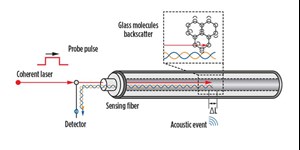What’s new in Exploration
Carbon dioxide (CO2) has been on the planet for billions of years. The oil and gas industry? Maybe 4,000. How long has oil powered machines? About 165 years, probably first used in steam engines as early as 1855, certainly for California drilling rigs, circa 1885.
AMH (Anatomically Modern Humans) “people” have been around a mere 50,000 years, often brutalizing others. In December 1865, the 13th Amendment to the U.S. Constitution was ratified immediately after 618,000 American soldiers died warring over the definition of “people” and “We.” Yet, 154 years later, we have a long list of organizations still battling human trafficking [see list at wikipedia.org].
Roman flushing toilets [735 BC] were improved by Thomas Crapper in 1880, allowing enclosed public sewage within unsanitary cities, because hundreds of thousands of people were dying in cholera pandemics [1863-1875]. In 1920, women received the right to vote in U.S. elections, 49,900 years after ascension. The patent on the Ram BOP was granted in 1922, 63 years after Col. Edwin Drake’s pioneering oil well in 1859.
So, what is the point? Mankind culturally evolves much slower than crisis-motivated improvements to technology. It was true for scientists Sir James Chadwick, Lise Meitner, Fritz Strassman and Enrico Fermi. Just because we discover a femtometer-sized particle in nature does not mean we all die from it. While luxuriating within the comfort of climate-controlled residences and vehicles, self-interest forces pressure investors, industries and governments to prevent petroleum energy providers from safely exploring [the Arctic] with modern, safer tech. Meanwhile they ignore what they could do globally, to lead to healing, education, and feeding millions. Hypocritical? Doesn’t bother them at all. When the results of exploration for affordable energy regress, so does all of society, including the environment.
Exploration has been taken over by a political cacophony [Paris Accord] for 100% alternatives to fossil fuel. Witness Chevron, forced by shareholders [May 2020] into complicity of popular global warming pedagogy. BP CEO Looney loses the firm’s mind [June 9, 2020] planning carbon reduction by laying off 10,000 workers, and stranding explored oil assets in the ground! RIP Amoco [1998]. In concept, exploring for more efficient alternatives is a normal part of our brief energy use for complex machines. Yet, wind and water, used for centuries, cannot juice many cities.
What remains essential to any exploration? Visualization is everything in exploration and reservoir understanding, whether drilling or communicating. Ideas first, then tools, then action.

All tools, digital, analog or shovel, have some form of viz output. Humans must create, then see, the visualization. Eyes train the brain about not having to touch a wall to control your motion. You remotely experience only an image of light, not the physical force of an immovable structure. Reflection seismic is remote sensing of acoustic behavior, positioned as an image of the subsurface. DAS, the claimed replacement for microseismic surveys or well logs, is a clever imaging tool, Fig. 1.
Today, DAS fiber optic is popular black box tech for the oil field. Usually from the surface, a coherent laser pulse is shot down a fiber optic cable, and reflected light is returned to an optoelectronic detector [re: interferometry, Maxwell, 1877; Michelson–Morley experiment, 1887] at the surface, where timing delays of the reflected light may be due to some form of strain on the fiber, creating light scattering. Reflections are calculated/calibrated to interpret the disturbance, due to acoustic vibration [seismic], temperature or even chemistry.
The fiber can be placed anywhere physically possible and will survive up to about 350o F. The fiber, itself, acts as a distributed interferometer with common detection capability ±10 meters along the fiber length [Coherent Rayleigh Optical Time Domain Reflectometry]. Intermediate sensors can be added to the fiber. Usually, the calculated result represents only a scalar input to that point from somewhere. New sensors can now reveal vectors; directionality [Paulsson, Inc.]. Output is formatted to other recorders or into images for humans.
Explorationists in 2050 will still be searchers, using new tech for any and all energy that can be consumed by slowly evolving users.

- Applying ultra-deep LWD resistivity technology successfully in a SAGD operation (May 2019)
- Adoption of wireless intelligent completions advances (May 2019)
- Majors double down as takeaway crunch eases (April 2019)
- What’s new in well logging and formation evaluation (April 2019)
- Qualification of a 20,000-psi subsea BOP: A collaborative approach (February 2019)
- ConocoPhillips’ Greg Leveille sees rapid trajectory of technical advancement continuing (February 2019)


